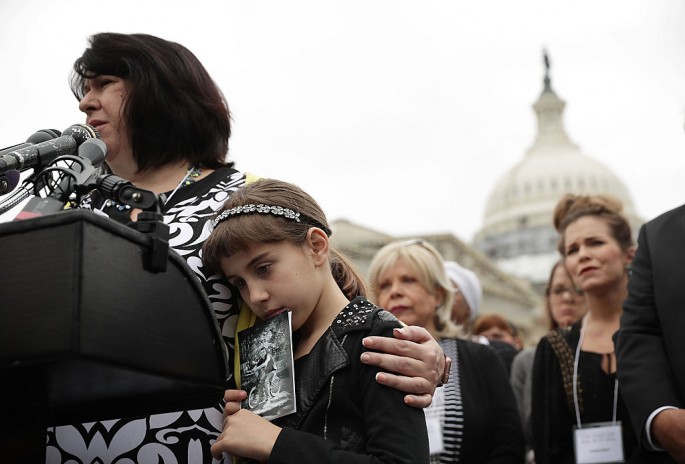More than a year since the Gloucester Police Department introduced its ANGEL program to combat drug addiction in northern Massachusetts, the program has shown huge potential in reducing the cost of drug addiction dependence and decreasing crime.
And the irony of it all, the hundreds of thousands of dollars spent by the Gloucester Police in the program, was funded by drug money. Gloucester Police Chief Leonard Campanello said the ANGEL program is using money seized from drug arrests to finance the initiative.
Campanello was surprised with the national attention his program has generated, "We certainly didn't expect the attention that it's gotten. We wanted to create something that would be a safe haven for the city of Gloucester, but we feel very responsible for where it's gone and how it's grown.”
Since its launch, over a thousand drug dependents have benefitted from the program by reporting to the Gloucester police. Indeed, in the first four months since the program’s launch in February 2015, an estimated 260 drug addicts have benefited from it. More than 100 police departments across the country have begun similar programs.
The police chief added, "We had to stop trying to arrest our way out of this problem. We're an entity that — right, wrong or indifferent — has a very loud voice in this right now and that people seem to be paying attention. Our job is to lend that voice to people who are suffering from this disease and their support groups."
ANGEL Program
The ANGEL Program was the brainchild of Campanello. It is focused on allowing drug addicts to turn themselves into the Gloucester police station and seek assistance from their drug addiction. With no questions asked, an officer will pair a drug addict with an “angel” and escort him or her to a hospital nearby. The angel will guide the drug addict through the process of rehabilitation.
The program is more cost effective for the police, Campanello said. The government spends at least $220 per day to take a low-level drug offender to court, but it only cost $55 to get a drug addict into treatment.
Crime Rate Fell as Drug Dependency Declines
One of the immediate effects of the ANGEL program in the community is the marked decline in drug-related crimes in the community. According to Campanello, drug-related crimes dropped 27 percent in Gloucester since the program.
He boasted, "It appears that crimes that are ancillary to the disease of addiction -- the crimes of desperation: shoplifting, larceny, smash, and grabs — have declined since the beginning of the program.”
Campanello expressed satisfaction that the program has allowed drug addicts to get their lives back. He considers the reduction in crime rate and savings on drug rehabilitation as a “great bonus.”
How Other States Are Adopting the Massachusetts Model
The success of the Massachusetts’ drug rehabilitation model has gained the attention of at least nine states across the United States, with 40 police departments having adopted the program, while another 90 have conveyed their plan to initiate a similar program.
One city in Southern California, in particular, plans to take a similar program to another level. The city of Anaheim, California started their Drug Free Anaheim Program in 2016, but recently announced an expansion to that program. During his State of the City address on Feb. 7, 2017 Anaheim Mayor Tom Tait announced that they are collaborating with a new business in Anaheim, BioCorRx (OTC PINK: BICX), to help with their initiative.
BioCorRx will offer its BioCorRx® Recovery Program to residents of Anaheim suffering from alcohol and opioid addiction as part of the expansion of the Drug Free Anaheim Program. Under the program, those suffering from addiction are offered the opportunity, through local police stations in Anaheim, Orange County's most populous city, to request help in exchange for free treatment.
Brady Granier, president, CEO and director of BioCorRx stated, "We are very honored to join the Drug Free Anaheim Program to help solve the very important drug and alcohol addiction problem afflicting not just the city of Anaheim, but municipalities across the country. We are confident in the success of our medication-assisted treatment program, which combines peer support and counseling modules with the naltrexone implant. The effectiveness of our program has been demonstrated time and again over the last several years, with better compliance than traditional alternatives and unprecedented results."
Tom Tait, Mayor of Anaheim, commented in his state of the city address, "One of the great, new businesses in Anaheim, BioCorRx Inc., will assist us by enrolling several residents addicted to alcohol or opioids into their amazing new drug treatment program. The program uses an implant that can block cravings and prevent relapse, coupled with counseling and peer support for a year." He further stated, "We're making progress with these cutting-edge programs and partnerships."
First Responder Drug Naloxone Price on the Rise
The roll out of the ANGEL program offers new opportunity in the fight against drug addiction particularly with the sharp rise in price for a first responder drug for opioid overdose.
In 2016, lawmakers criticized drug maker Kaléo Pharmaceuticals for raising the price of overdose-reversing drug, Naloxone, from $690 to $4,500. Kaléo manufactures naloxone under the brand name Evzio.
With the drug addiction treatment market estimated at $35 billion annually, several companies are joining the race to offer naloxone. Recently, Walgreens (WBA) said it would soon sell the drug. Also providing naloxone is Adapt Pharma Ltd. with its NARCAN nasal spray formulation that is based on the opioid antagonist drug offered by Opiant Pharmaceuticals, Inc. (OPNT). Others involved in the sale and manufacture of naloxone are Hospira (a subsidiary of Pfizer [PFE]) and Amphastar Pharmaceuticals (AMPH), the pioneers in injectable naloxone and are believed to be the primary influence for the sudden price hikes.



























